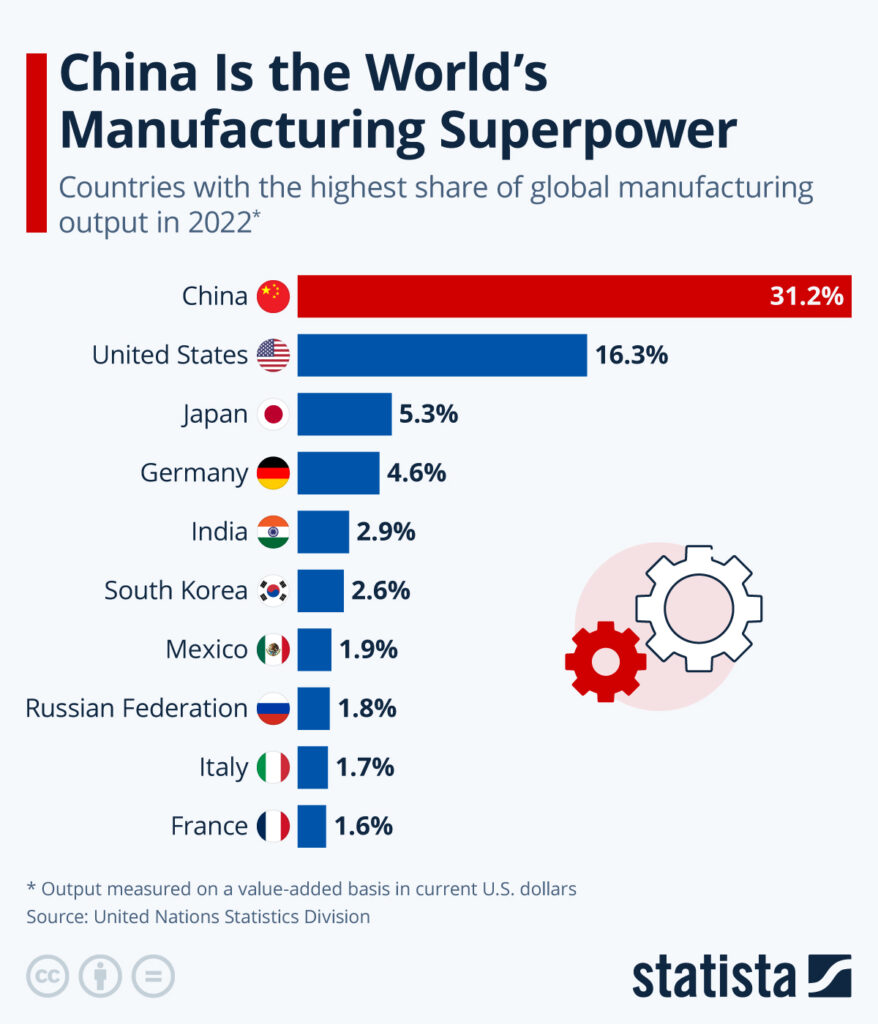
The world relies on China for a staggering amount of its manufactured goods. From the smartphones in our pockets to the clothes we wear, a significant portion of what we use daily originates from Chinese factories. This begs the question: why does China make everything? The answer lies in a complex interplay of historical, economic, and political factors that have propelled China to become the world’s manufacturing powerhouse. This article will delve into the key reasons behind China’s manufacturing dominance, exploring its vast workforce, government support, and robust infrastructure.
China’s Manufacturing Powerhouse
China’s rise as a manufacturing giant is a relatively recent phenomenon. While the country has a long history of craftsmanship and production, its transformation into the “world’s factory” began in earnest in the late 20th century. Driven by economic reforms and opening up to global trade, China embarked on a path of rapid industrialization. This period saw massive investments in factories, infrastructure, and technology, laying the foundation for its current manufacturing prowess.
China’s manufacturing sector is incredibly diverse, encompassing a wide range of industries. From electronics and textiles to automobiles and machinery, China produces goods across nearly every sector. This breadth of production capabilities has made China an indispensable partner for businesses worldwide, seeking cost-effective and reliable manufacturing solutions.
The sheer scale of China’s manufacturing sector is staggering. The country boasts millions of factories employing hundreds of millions of workers. This vast industrial base allows China to produce goods in enormous quantities, meeting the demands of a global market hungry for affordable products.
Affordable Workforce

One of the primary drivers of China’s manufacturing success is its vast and relatively inexpensive workforce. For decades, China has benefited from a large pool of skilled and unskilled labor at competitive wages. This affordability has made Chinese manufacturing a highly attractive option for businesses seeking to reduce production costs.
While wages in China have been rising in recent years, they remain significantly lower than in developed countries. This wage differential continues to give Chinese manufacturers a cost advantage, allowing them to offer products at lower prices.
Beyond wages, China’s workforce also boasts a strong work ethic and a willingness to adapt to new technologies. This combination of affordability and adaptability has made China a magnet for foreign investment in manufacturing.
Government Support for Industry
The Chinese government has played a pivotal role in fostering its manufacturing sector. Through various policies and initiatives, the government has provided significant support to industries, encouraging growth and innovation.
One key aspect of this support is the provision of infrastructure. China has invested heavily in transportation networks, energy grids, and communication systems, creating a robust infrastructure that supports manufacturing operations.
The government has also implemented policies to attract foreign investment in manufacturing. These policies include tax breaks, subsidies, and streamlined regulatory processes, making China a more attractive destination for businesses seeking to establish manufacturing facilities.
Furthermore, the government has actively promoted technological development and innovation within the manufacturing sector. This has involved investing in research and development, supporting the adoption of new technologies, and encouraging the development of domestic manufacturing capabilities.
Robust Supply Chain Infrastructure

China’s manufacturing success is also underpinned by its sophisticated supply chain infrastructure. The country has developed a vast network of suppliers, distributors, and logistics providers, enabling efficient and cost-effective movement of goods.
This robust supply chain allows manufacturers to source raw materials, components, and finished goods quickly and efficiently. The extensive network of transportation routes, including highways, railways, and ports, facilitates the smooth flow of goods throughout the country and beyond.
China’s logistics sector has also undergone significant development, with the emergence of sophisticated warehousing and distribution systems. These systems ensure that goods are stored and transported efficiently, minimizing delays and costs.
Global Impact of Chinese Manufacturing
China’s manufacturing dominance has had a profound impact on the global economy. The country’s low-cost production has made goods more affordable for consumers worldwide, contributing to rising living standards in many developing countries.
However, China’s manufacturing prowess has also raised concerns about its impact on developed economies. The influx of cheap Chinese goods has led to job losses in manufacturing sectors in some developed countries, contributing to economic challenges.
Moreover, China’s dominance in manufacturing has raised questions about its environmental impact. The country’s rapid industrialization has resulted in significant pollution and resource depletion, raising concerns about sustainability.
Conclusion
China’s rise as the “world’s factory” is a testament to its economic and industrial transformation. Driven by a combination of factors, including a vast and affordable workforce, government support for industry, and a robust supply chain infrastructure, China has become a manufacturing powerhouse. While why does China make everything is a complex question with multifaceted answers, its impact on the global economy is undeniable. China’s manufacturing dominance has reshaped global trade patterns, influenced consumer behavior, and raised important questions about economic development, sustainability, and the future of work.
